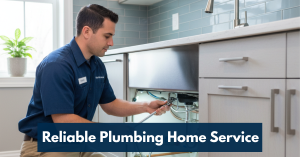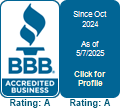Keeping your home powered during an outage is more than a convenience, especially in a place like Aventura where storms and unexpected disruptions can happen at any time. Having a generator is a great first step, but knowing how to install a generator transfer switch in Aventura properly is just as important.
This simple but powerful device helps your generator work safely with your home’s electrical system, giving you a smooth, controlled way to switch from utility power to generator power without risking electrical hazards or damaging your appliances.
A lot of homeowners don’t realize how essential a transfer switch is until they face their first long outage. With the right setup, your generator becomes a reliable backup instead of a temporary fix.
In this guide, we’ll walk you through how generator transfer switches work, what’s involved in installing one, and why partnering with professionals like Whitney Services makes the process safer, easier, and fully compliant with Florida electrical codes.
Key Takeaways
- Installing a generator transfer switch is a critical safety measure that isolates your home’s circuits from the utility grid, protecting you, your family, and utility workers.
- Proper installation includes planning, permitting, correct wiring, and testing.
- Whitney Services specializes in electrical services and generator installation in Aventura, FL, offering expert, code-compliant work from start to finish.
Why Installing a Generator Transfer Switch Matters
Living in Aventura, FL, means you know how unpredictable power can get — especially when storms roll in. A well-installed generator can be your lifeline during an outage, but without the right setup, it can also be a hazard.
A transfer switch makes sure your generator’s electricity feeds only the circuits you’ve selected, and keeps your home isolated from the utility grid while it runs. This prevents something called “back-feeding,” which is when generator power accidentally goes back into the utility lines — a serious risk for electrical workers restoring power.
Beyond safety, a transfer switch offers control. You decide exactly which circuits stay powered — maybe your refrigerator, your lights, air conditioning, or even a few essential outlets. That way, you don’t need a generator big enough to run every single appliance, which can save on cost and fuel.
Step-by-Step Guide: How to Install a Generator Transfer Switch
Here’s a friendly, practical guide to how you can safely install a generator transfer switch — most of the heavy lifting is best left to professionals, though.
Assessment & Load Planning
- First, sit down with your electrician and make a list of circuits you want backed up — think about the essentials: fridge, lights, HVAC, maybe your home office.
- An experienced electrician will calculate how much load those circuits use and match that to your generator’s capacity.
- Decide on the type of transfer switch: manual (you flip it when needed) or automatic (it senses an outage and switches for you).
Choose the Right Switch
- In many homes, a manual transfer switch is enough — especially if you’re okay starting the generator and flipping the switch when power goes out.
- But if you want maximum convenience — for example, if you’re not always home when the power fails or you have critical systems — an automatic transfer switch might be the better investment.
- Either way, make sure the switch is rated appropriately for your main panel and generator.
Get the Permits
- Before any wiring begins, you’ll need the proper electrical permits from your local building department.
- This generally involves submitting a plan: where the generator will sit, how the wiring will run, and which circuits will be connected.
- Inspectors will come in afterward to check that everything was installed correctly and safely.
Location & Mounting
- The transfer switch should be mounted close to your main electrical panel to minimize wiring runs and reduce voltage drop.
- Pick a sturdy, dry wall, and make sure the switch is accessible but also protected from the elements.
- For the generator itself, choose a level, well-ventilated spot outside — never in an enclosed space like a garage or basement.
Wiring & Conduit Installation
- Your electrician will run conduit (metal or PVC) from your main panel to the transfer switch, and from there to the generator inlet.
- The wiring needs to be sized correctly for the amperage your generator will produce.
- It’s also essential to wire neutral and ground properly, per manufacturer instructions — doing this incorrectly can lead to dangerous faults.
Install the Inlet Box
- Install a weather-resistant inlet box outdoors so you can plug your generator safely.
- The inlet should be positioned so the exhaust from the generator won’t blow toward windows, doors, or air intakes.
Make the Connections
- Connect the selected circuits from your main panel to the transfer switch.
- Then, from the transfer switch, run wiring to the generator inlet box.
- Ensure the connections for hot, neutral, and ground are all secure, tight, and follow the correct polarity.
Testing Under Load
- Once wiring is complete, you’ll want to simulate a power outage. Turn off your utility/main breaker, and start the generator.
- Flip the transfer switch to “generator” mode, and turn on your selected circuits one by one.
- Use a voltmeter or other testing equipment to confirm voltage and frequency are stable.
- Let the generator run under load for a while — listening and watching for any problems like overheating, unusual vibration, or other signs of trouble.
Label and Secure Everything
- Label each circuit on the transfer switch clearly, so you know which breaker corresponds to which load when electricity is flowing.
- Mount a sign (or signs) as required by code: for example, showing operation steps, transfer switch location, or warning that a generator is part of the system.
Regular Maintenance
- Even after it’s installed, the job isn’t done — test the generator and switch a few times a year to ensure everything runs smoothly.
- Check all connections, tighten as necessary, and inspect for any signs of corrosion, wear, or damage.
- Keep up with the generator’s recommended service schedule: oil changes, filter cleaning, fuel checks, and so on.
Important Safety Precautions
- Always treat wiring as “live” until a professional tests it — never assume it’s safe to handle on your own.
- Never plug your generator into a standard home outlet — that can easily lead to dangerous back-feeding.
- Place your generator at least 20 feet away from windows, doors, or any openings to prevent carbon monoxide from entering your home.
- Install and regularly test carbon monoxide detectors in your home — generator exhaust is colorless, odorless, and very dangerous if not vented properly.
- Make sure the transfer switch and generator are installed by a licensed and insured electrician who knows local codes.
- Review the manufacturer’s installation manual carefully and follow all specifications — this is not the time to “wing it.”
Why Choose Whitney Services
When you’re ready to install a generator transfer switch in Aventura, FL, here are some reasons Whitney Services is your best partner:
Local Experience & Licensing
Whitney Services is deeply familiar with South Florida’s building codes, permitting practices, and local electrical standards. Our electricians are fully licensed, insured, and experienced in working in Aventura and surrounding areas.
Comprehensive Electrical Services
We don’t just install a switch — we handle everything from planning your load, sizing the generator, mounting the inlet box, wiring, and final testing. We take care of all the details so you don’t have to.
Code Compliance & Permitting
We manage the permit process from start to finish and schedule the required inspections. That means your installation is legal, safe, and meets all the relevant building and electrical codes.
Safety-First Approach
Protecting your family and home is our top priority. We follow best practices, enforce correct grounding, ensure back-feed protection, and make sure everything is properly labeled and documented.
Ongoing Support & Maintenance
After the installation, we don’t disappear. Whitney Services offers regular maintenance checks, testing, and repair electrical services to keep your backup power system ready when you need it most.
Conclusion
Putting in a generator transfer switch isn’t just a “nice upgrade.” It’s a fundamental safety step. By isolating your home’s circuits from the grid during an outage, you safeguard your family, your equipment, and even the utility crew working on power lines nearby.
In Aventura, FL, working with a local, experienced company like Whitney Services ensures the job gets done right — from the permitting and planning to installation and testing. If you want the peace of mind that comes from a properly wired, code-compliant backup power solution, we’re here for you.
Reach out today for a consultation and let Whitney Services help you invest in the kind of reliable, safe power system that gives you confidence even when the lights go out.
Frequently Asked Questions
Yes. Proper installation involves high-voltage wiring, permits, and testing — mistakes can lead to fire hazards or illegal back-feeding.
A manual switch requires you to flip it when the generator starts, while an automatic switch senses the outage and switches over on its own.
DIY repairs may be risky and violate warranties. It’s best to hire licensed HVAC professionals for any service to ensure safety and proper operation.
That depends on the size of your generator and how your electrician sets up the circuits. You can choose to back up only essential circuits or the entire panel — depending on your budget and needs.
A few times a year, simulate a power outage and run a full-load test. Also, follow your generator’s maintenance schedule for oil changes, filters, and general inspections.







